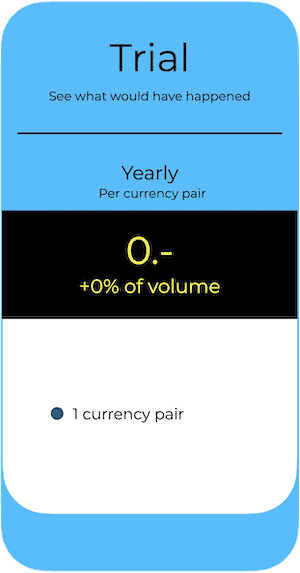However, a Brief Correction is Possible
The last few weeks have seen fairly stable conditions regarding the euro and the U.S. dollar. This stability has also been reflected in stable cross-currency relationships between major currencies.
I currently see little reason to believe that this will change significantly in the short term. If peace is achieved between Russia and Ukraine, it should have a liberating and positive effect on Europe similar to the negative effect the start of the war had three and a half years ago.
I expect the USD to remain weak for the last four months of the year. Falling energy prices could exacerbate this weakness, leading to savings for non-USD countries and dampening demand for the USD.
The Euro Will Benefit
As the second most important trading currency and an alternative to the USD, I expect the euro to be in greater demand than other major currencies. Currencies such as the SEK may benefit even more than the euro from a significantly improved risk picture. However, Norway, as an energy exporter, could face headwinds.
The CHF Could Depreciate
Switzerland cannot sustain the very high tariffs on exports to the US. There is now a major debate in Switzerland about closer ties with the EU, which seemed much less likely before the tariffs were imposed.
In any case, improving the competitiveness of the Swiss economy is essential. Fortunately, politicians and the central bank are aware of this and will provide as much support as possible.
As mentioned above, I anticipate the USD will depreciate further, potentially reaching 1.20–1.24 EUR/USD by the end of the year. This would represent an additional 5–8% depreciation. If the Swiss franc (CHF) does not “compensate” for this USD depreciation, Swiss exports will become more expensive by this amount. The SNB will try to prevent this by keeping the CHF stable against the USD, which would cause the CHF to depreciate against the euro. I believe this scenario is 70–80% likely.
The UK, Canada, and Australia are Weakening
In addition to its sluggish economy, the UK has inflation that is higher than that of the US. This has prompted the country’s central banks to consider further interest rate cuts. Meanwhile, Canada and Australia have made significant progress toward price stability. While I still consider Australia to be undervalued, this does not necessarily mean that its currency will rise in the short term. Fundamentally, the country and its economy are moving in the right direction. All it needs is the right trigger to move the AUD from its nearly historic undervaluation to adequate equilibrium, but this trigger is not apparent today.





